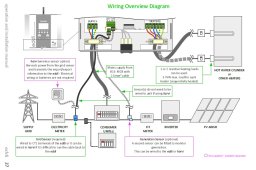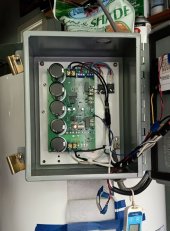Hi all,
I have a 5.3kW solar PV array and an electric battery (10kWh). I would like to further optimize the system by diverting PV electricity to a thermal storage with a 2.8kW resistance heating element in it. Ideally, I would be able to prioritize this over the electrical battery i.e. charge this first and then the electrical battery once the thermal storage is fully charged. Also, it would be great if it could vary the electricity (AC) to the heating element depending on the genreation of the solar panels. So, if the panels are generating 1kW, it will pass 1kW to the heating element, if it is then increasing to 1.5kW, the diverter is tracking it and increasing the electricity passed to the heating element. It should be capped to 2.8kW, the max wattage that the heating element can take. In the UK, this product would do it (I am not affiliated with them): https://myenergi.com/product/eddi/ , but it is not available in the US. Any suggestion?
thanks and regards
I have a 5.3kW solar PV array and an electric battery (10kWh). I would like to further optimize the system by diverting PV electricity to a thermal storage with a 2.8kW resistance heating element in it. Ideally, I would be able to prioritize this over the electrical battery i.e. charge this first and then the electrical battery once the thermal storage is fully charged. Also, it would be great if it could vary the electricity (AC) to the heating element depending on the genreation of the solar panels. So, if the panels are generating 1kW, it will pass 1kW to the heating element, if it is then increasing to 1.5kW, the diverter is tracking it and increasing the electricity passed to the heating element. It should be capped to 2.8kW, the max wattage that the heating element can take. In the UK, this product would do it (I am not affiliated with them): https://myenergi.com/product/eddi/ , but it is not available in the US. Any suggestion?
thanks and regards




